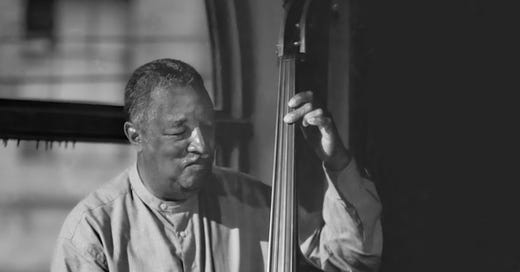Ray Brown - Bill King Photography
The Top o' the Senator—a name that rings with the smoky resonance of a seasoned jazz saxophone—was more than a club. From its perch at 251 Victoria Street in Toronto, it was an incubator of musical brilliance, a living, breathing homage to jazz. Between 1990 and 2005, it stood as one of Toronto’s most cherished sanctuaries for the art form, hosting an illustrious procession of international and homegrown talent.
Its story began in 1929, when Robert Angeloff opened the Busy Bee Diner at 249 Victoria Street, a modest eatery serving the bustling heart of the city. By 1948, the diner was transformed by George Nicolau into the Senator, a cornerstone of Toronto’s dining culture. It was Bob Sniderman—scion of the legendary Sam Sniderman—who recognized the potential to extend its reach into the arts. In 1989, he added the Senator Steakhouse next door, and a year later, in June 1990, the crown jewel emerged: the Top o’ the Senator, a jazz club poised to rewrite the city’s musical script.
The club, nestled above the Steakhouse, carried an air of unpretentious sophistication. Managed by Sybil Walker, it became a magnet for jazz luminaries. Shirley Horn’s velvet tones, Joe Pass’s guitar mastery, Lou Donaldson’s blues-infused bebop, Terence Blanchard’s cinematic compositions, and the deep, resonant bass of Ray Brown—all found a home on its intimate stage.
But the Top o’ the Senator wasn’t just a showcase for international greats. It was a launchpad and laboratory for Canada’s finest. Rob McConnell’s Boss Brass, Ed Bickert’s understated guitar lines, and Rene Rosnes’s crystalline piano—these were the sounds of Canadian jazz evolving in real time.
The Top O’ the Senator wasn’t just a club; it was a cultural beacon. It reminded us that jazz is about community, about the magic that happens when a note hangs in the air, and a room full of strangers catches its meaning together. It was a chapter in Toronto’s history that swung hard, hit every high note, and left a lasting melody.
Kristine and I often carried our cameras like talismans, ready to capture the fleeting magic of jazz brilliance. We’d nestle ourselves in the alcove to the left of the stage, an intimate nook graciously offered by manager Sybil Walker, where press and photographers could work without breaking the spell cast by the performers. From this sanctuary, we witnessed the kind of nights that could only be stilled in memory or captured on film.
The gentle click of a camera shutter mingled with the shuffling rhythms of Houston Person’s tenor sax, a sound as rich and tactile as velvet. Etta Jones’s soulful voice rode atop the groove, defying time itself, while Shirley Horn’s hushed, sophisticated harmonies drew rapturous applause—even coaxing jazz icon George Shearing to rise from his seat in admiration. Dorothy Donegan's fingers blurred across the keys, her boogie-woogie repertoire rambling with a virtuosity that felt both irreverent and untouchable.
We were there when Diana Krall stripped down to her jazz trio essentials, her voice smoky and full of stories. When Jamie Cullum leaped onto the grand piano, defying both gravity and tradition. When bassist Ray Brown’s trio swung so hard, it seemed the room itself had joined the rhythm section. Each note, each gesture, immortalized through the curling focus ring of our cameras, the satisfying click of shutters, the tactile feel of film sliding into place.
There were moments that stood apart—Amy Winehouse, her presence electric even in a showcase setting, a promise of brilliance tinged with fragility. Shirley Eikhard’s compositions struck a nerve, while pianists Benny Green and Geoffrey Keezer unleashed storms on the ivories, trading ferocity for finesse and back again. Betty Carter, fierce and unyielding, set the stage ablaze with a fire only she could command.
Lunch with Joe Henderson was another story altogether. Over Chicken Club sandwiches and conversation with bassist Ray Drummond, we found camaraderie in the unassuming rituals of jazz life. It was a scene far removed from the roaring theatre crowds, from the jazz aficionados who packed the house night after night, eager to steep themselves in deep grooves and soulful harmonies.
These were nights that transcended the music itself. They were fleeting yet eternal, lives and legacies captured one frame at a time. And as the cameras swung and shutters clicked, we knew we were not just documenting moments—we were preserving the essence of jazz, the soul of a timeless art form.






I stumbled into the Top O’ The Senator on a June evening in 2000 far from home at a conference in Toronto. My colleagues went to see Lion King across the street- but I detoured randomly into what I hoped was a dark cafe to nurse my broken heart- and voila! Opening night for the Benny Green Trio. It was full of other musicians from all over the city and what a magical, transformative night. I don’t know if I’ve ever felt so much connection- what a powerful experience. I’m still enjoying listening to Benny Green ❤️